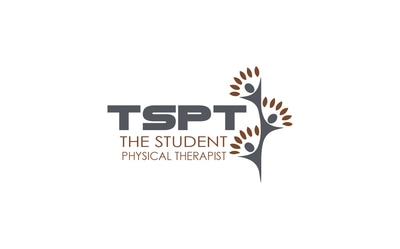- Home
- About Us
- TSPT Academy
- Online Courses
-
Resources
- Newsletter
- Business Minded Sports Physio Podcast
- Day in the Life of a Sports PT
- Residency Corner
-
Special Tests
>
-
Cervical Spine
>
- Alar Ligament Test
- Bakody's Sign
- Cervical Distraction Test
- Cervical Rotation Lateral Flexion Test
- Craniocervical Flexion Test (CCFT)
- Deep Neck Flexor Endurance Test
- Posterior-Anterior Segmental Mobility
- Segmental Mobility
- Sharp-Purser Test
- Spurling's Maneuver
- Transverse Ligament Test
- ULNT - Median
- ULNT - Radial
- ULNT - Ulnar
- Vertebral Artery Test
- Thoracic Spine >
-
Lumbar Spine/Sacroiliac Joint
>
- Active Sit-Up Test
- Alternate Gillet Test
- Crossed Straight Leg Raise Test
- Extensor Endurance Test
- FABER Test
- Fortin's Sign
- Gaenslen Test
- Gillet Test
- Gower's Sign
- Lumbar Quadrant Test
- POSH Test
- Posteroanterior Mobility
- Prone Knee Bend Test
- Prone Instability Test
- Resisted Abduction Test
- Sacral Clearing Test
- Seated Forward Flexion Test
- SIJ Compression/Distraction Test
- Slump Test
- Sphinx Test
- Spine Rotators & Multifidus Test
- Squish Test
- Standing Forward Flexion Test
- Straight Leg Raise Test
- Supine to Long Sit Test
-
Shoulder
>
- Active Compression Test
- Anterior Apprehension
- Biceps Load Test II
- Drop Arm Sign
- External Rotation Lag Sign
- Hawkins-Kennedy Impingement Sign
- Horizontal Adduction Test
- Internal Rotation Lag Sign
- Jobe Test
- Ludington's Test
- Neer Test
- Painful Arc Sign
- Pronated Load Test
- Resisted Supination External Rotation Test
- Speed's Test
- Posterior Apprehension
- Sulcus Sign
- Thoracic Outlet Tests >
- Yergason's Test
- Elbow >
- Wrist/Hand >
- Hip >
- Knee >
- Foot/Ankle >
-
Cervical Spine
>
- I want Financial Freedom
- I want Professional Growth
- I want Clinical Mastery
Craniocervical Flexion Test (CCFT)
Purpose: To assess the ability of utilizing the deep neck flexors (rectus capitis anterior, rectus capitis lateralis, longus colli, longus capitis).
Test Position: Supine, hooklying.
Performing the Test: A blood pressure cuff is inflated to 20 mmHg and is placed between the lordotic curve and the surface of the table. While keeping the back of the head stable, the patient performs cranial cervical flexion in a graded fashion in 5 increments (22, 24, 26, 28, and 30 mmHg). Each position is held for 10 seconds with 10 seconds rest between increments. The cranial cervical flexion is performed by a head nod in the upper cervical spine. Make sure the patient’s jaw is relaxed, so that there is no platysma, hyoid muscle, or sternocleidomastoid recruitment. The test is ended when the pressure decreases >20% or when substitution occurs during the head nod. Normal response is achieving 26-30 mmHg.
Diagnostic Accuracy: Unknown.
Importance of the Test: Patients with forward head posture and neck pain have been found to have decreased activation and endurance of the deep cervical flexors (rectus capitis anterior, rectus capitis lateralis, longus colli, and longus capitis) - “Clinical assessment of the deep cervical flexor muscles: the craniocervical flexion test.” They tend to over-utilize other muscles (platysma, hyoid muscles, and especially the sternocleidomastoid) for postural maintenance, which leads to the commonly seen position of forward head postures-a position we commonly see in those who use computers frequently or engage in sedentary activity on a regular basis.
Note: tests should only be performed by a properly trained health care practitioner.
Test Position: Supine, hooklying.
Performing the Test: A blood pressure cuff is inflated to 20 mmHg and is placed between the lordotic curve and the surface of the table. While keeping the back of the head stable, the patient performs cranial cervical flexion in a graded fashion in 5 increments (22, 24, 26, 28, and 30 mmHg). Each position is held for 10 seconds with 10 seconds rest between increments. The cranial cervical flexion is performed by a head nod in the upper cervical spine. Make sure the patient’s jaw is relaxed, so that there is no platysma, hyoid muscle, or sternocleidomastoid recruitment. The test is ended when the pressure decreases >20% or when substitution occurs during the head nod. Normal response is achieving 26-30 mmHg.
Diagnostic Accuracy: Unknown.
Importance of the Test: Patients with forward head posture and neck pain have been found to have decreased activation and endurance of the deep cervical flexors (rectus capitis anterior, rectus capitis lateralis, longus colli, and longus capitis) - “Clinical assessment of the deep cervical flexor muscles: the craniocervical flexion test.” They tend to over-utilize other muscles (platysma, hyoid muscles, and especially the sternocleidomastoid) for postural maintenance, which leads to the commonly seen position of forward head postures-a position we commonly see in those who use computers frequently or engage in sedentary activity on a regular basis.
Note: tests should only be performed by a properly trained health care practitioner.
References:
Jull GA, O'Leary SP, Falla DL. "Clinical assessment of the deep cervical flexor muscles: the craniocervical flexion test." J Manipulative Physiol Therapy 2008 Sep 31. Web. 08/18/2012.
Jull GA, O'Leary SP, Falla DL. "Clinical assessment of the deep cervical flexor muscles: the craniocervical flexion test." J Manipulative Physiol Therapy 2008 Sep 31. Web. 08/18/2012.
Copyright © The Student Physical Therapist LLC 2023




